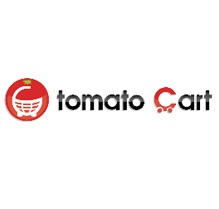TomatoCart
April 10, 2017 - 3 minutes read
This can be one of the best things that can happen to your store as it utilizes Rich Internet Applications or RIA’s in its backend that presents a powerful GUI similar to your PC. It also helps to enhance SEO, as it implements Rich Keyword URL’s for products, reviews, articles, categories, etc and also the Rich Keyword URL provides with the advantage of replacing the ID with the name of the content. TomatoCart is powered with a simplified MVC that ensures a speedy performance.
An online presence where your products or services can be purchased is tantamount to success in modern business. For small businesses, especially those with very little extraneous budget, getting a solid e-commerce solution isn’t always in the cards, but that doesn’t have to be the case. With existing hardware and a LAMP (or WAMP) server, you can enjoy one of the more powerful shopping cart tools available.
TomatoCart is an open source shopping cart solution branched from osCommerce 3 that offers these features:
- RIA-based admin panel
- SEO ready
- Web Analytics (Piwik)
- Lightweight
- Built-in CMS
- Built-in email system
- Site management
- Catalog/product management and browsing
- Customer/order management
- Payment (gateways include: Amazon IPN, Authorize.net credit card/eCheck, Bank Wire, Google Checkout, iDEAL, PayPal, Safepay, Western Union, and much more)
- Shipping
- Stats and reports
- Promotion tools
System requirements
- Linux or Windows OS
- PHP v5.2.0+(with MySQLi extension)
- MySQL v5.0.7+
- Ext JS 2.2.1
Installing TomatoCart
The installation for TomatoCart is fairly straightforward. It is primarily a web-based installation, but there are a few steps to prepare before you point your web browser to the install.vI will be installing TomatoCart on a Ubuntu LAMP server (the installation instructions will need to be modified for installing on a WAMP server).
The first step in the preparation is to create a MySQL database. I want to make this installation as painless as possible, so I prefer to use a tool like MySQL Workbench for this task. With that tool, create a database called tomcart using the utf8 – default collation.
With the database created, you need to create the folder to house the application. I created the folder /var/www/TOMCART. You can name that folder whatever you like, but for the purpose of this installation, I’ll stick with TOMCART. Create the folder with the command sudo mkdir /var/www/TOMCART.